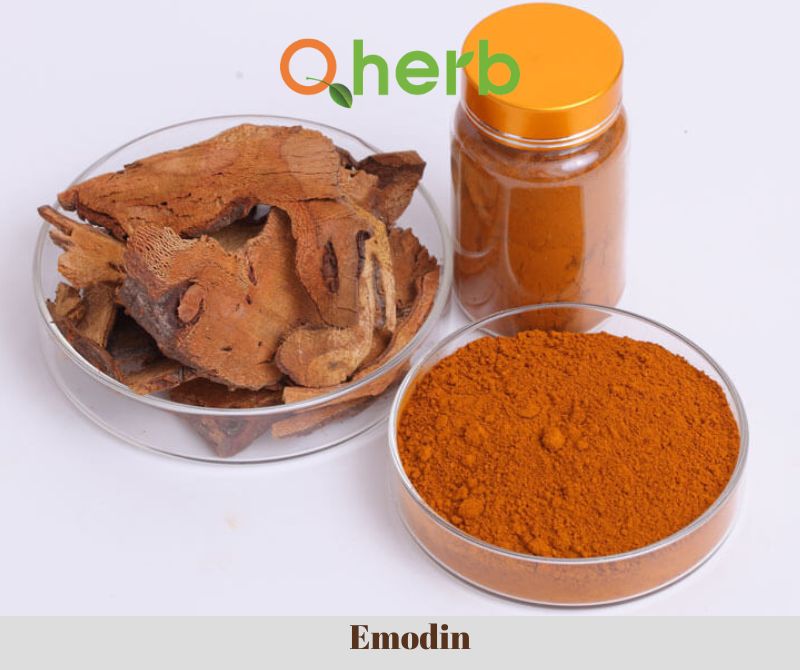Everything You Wanted To Know About Emodin
Emodin happens to be a polyphenol that is available in leaves, roots, as well as bark of several plants like cascara, aloe vera, senna, rhubarb, Psychotria camponutans, Polyganum cuspidatum, Polygonum multiflorum, Rheum palmatum, Radix et Rhizoma Rhei, Ventilago madraspatana, and Stephania dinklagei. Owing to its laxative effect, Emodin became a popular name among the masses and its usage in traditional Chinese medications is well-known. It is considered indispensable in cases related obesity and according to results derived out of some experiments, Emodin can be used to treat deadly diseases such as cancer. Get to know some more interesting facts about the polyphenol.
Chemistry
The content of Emodin tends to get altered during P. multiflorum and increases after long processing times. Anthraquinones, including Emodin, have been used in traditional Chinese medication as indicator constituents in order to ascertain the quality of P. multiflorum, which according to researchers should be having 0.1% minimum content. Hydroxyanthraquinones like Emodin are, in fact, phytoestrogens, which probably has a good amount of affinity for estrogen receptors in human. Emodin’s anti-inflammatory and antioxidant properties and their effects have been proved to some extent by certain experiments that have been carried out till now and, of course, animal studies, which have led researchers to identify the anticancer and hepatoprotective activity, aside from the potential to combat bone, respiratory, cardiovascular, metabolic, and neurological disease.
Uses and the Pharmacology
A few studies, conducted on animals, have displayed that Emodin tends to undergo detailed glucuronidation post oral consumption that leads to less than 3% bioavailability. With that being said, co-administration of Emodin along with piperine is most likely to boost Emodin pharmakinetics. A massive 221% in AUC or area under the curve, an alarming 230% decrease in clearance owing to glucuronidation inhibition, and a 258% increase in maximum concentration have been noticed. After Emodin was orally administered in rats, bioavailability of Emodin as well as other constituents of P. multiflorum were comparatively lower than the raw product.
Cardiac Effects
As far as reperfusion injury as well as acute myocardial infarction in animals are concerned. Emodin is said to protect the cardiac tissue with the help of mechanisms that are not quite clear. Pro and Anti-oxidant effects of Emodin have been described, while in smooth muscle tissue, potassium and calcium efflux mechanisms tend to get affected by Emodin. Since DEPs are said to be a source of air pollution particles that can be linked to different cardiovascular diseases such as heart failure, myocardial infarction, and angina, experts use DEP models in order to investigate the potential therapies and the underlying mechanisms that are key to the research. The mechanisms generally involve oxidative stress that cause pro-inflammatory responses linked to atherogenesis. In studies, related to rats, it has been found that that considerable deterioration of oxidative, inflammatory, and thrombotic processes brought about by pulmonary exposure to DEP were considerably mitigated by the consumption of 4 mg per kg of Emodin. Exposure to DEP brought around anti-oxidant as well as pro-oxidant effects. The antioxidant SOD experienced a significant decline, while the anti-oxidant glutathione reductase experienced a considerable increase. Emodin has the ability to reverse both the processes, thus implying its potential to offer a response that’s quite adaptive.
Glucose Metabolism
A thorough review of the studies conducted was published between the years 2008 and 2010 and it was said to identify all the relevant literature concerning nutritional supplements that are used to cure diseases such as type 2 diabetes. Out of all those which were identified, Emodin was used in 4 animal studies. Post administration, Emodin helped in boosting different lipid parameters, insulin resistance, blood glucose, and body weight. Emodin has displayed its anti-diabetic effects quite well, even though some more research is yet to be conducted.
Lipids
If animal models are considered, Emodin administration has displayed certain hypolipidemic effects, which are the improvements in triglycerides, free fatty acids, and total cholesterol. The mechanisms of action usually comprised agonistic impact on PPAR.
There is no sufficient evidence regarding the actual dosage of Emodin, but it’s being expected that an optimum amount will be sought out soon with the help of in-depth analysis. But, overdose of Anthraquinones might lead to severe diarrhea, dehydration, and pains in the intestine. Hence, a consultation with a qualified health professional before taking Emodin becomes mandatory.



 Healthier Future
Healthier Future